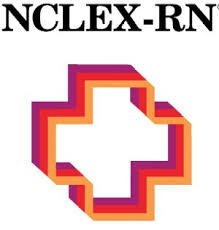 You’ve made it through years of classes and clinical training, late night cramming and high anxiety testing, but there is one more large hill to climb before becoming a registered nurse—the National Council Licensure Examination for Registered Nurses, or NCLEX-RN.
You’ve made it through years of classes and clinical training, late night cramming and high anxiety testing, but there is one more large hill to climb before becoming a registered nurse—the National Council Licensure Examination for Registered Nurses, or NCLEX-RN.
The test has been around in some form since 1979 and was given its current name in 1981.
While passing the test doesn’t make you a registered nurse, you can’t receive a state license without a passing grade. The test is overseen by the National Council of State Boards of Nursing to determine if you are ready for licensure from your state’s nursing board. Passing means you’re qualified as an entry-level RN.
In 2012, more than 150,000 graduates of nursing programs in the United States took their first NCLEX-RN and about 90% passed. As of June 2013, almost 90,000 people took the NCLEX-RN for the first time and about 86% of them passed.
The test’s exact contents will vary, but the board’s test plan for the RN exam lists eight areas it covers:
- Management of Care
- Safety and Infection Control
- Health Promotion and Maintenance
- Psychosocial Integrity
- Physiological Integrity
- Pharmacological and Parenteral Therapies
- Reduction of Risk Potential
- Physiological Adaptation
There are a number of online practice tests, review boards and courses available to prepare for the test. However, not all are accurate and you should use more than the typical caution dealing with online sources. Do research and make sure the organization or institution is legitimate.
The nursing board also has preparation information including a detailed NCLEX-RN examination test plan and online courses for the RN and LPN examinations.
You will be given up to six hours to finish the test, counting some optional breaks and an introductory tutorial on the computer testing. However, it may not take that long. The council said the average RN test takes 2.5 hours and the LPN test takes 2.3 hours.
The test uses what’s called computer adaptive testing, which means the test adjusts questions based on the previous answer, giving you a question you have a 50% chance of getting right, according to the council. You can’t move to the next question without providing an answer to the current one.
You will answer a minimum of 75 multiple-choice questions out of a maximum of 265. At that point the test ends for those the computer is 95% sure won’t pass or if you meet the standard for passing.
For everyone else, questions continue to the maximum of 265 questions or until the computer decides whether you pass or fail. The average number of questions given test candidates for the RN exam is 119, the council said.
You won’t learn your results until your state nursing board notifies you, about a month later. For those who fail, the council provides a Candidate Performance Report that shows results in each of the test areas and ratings of above, near or below the passing standard for each.
By this point in your education, you know your abilities during exams and study methods that work for you. But on exam day there are some things you can do to improve your performance.
The first step is to be as rested as you can be on test day and it may help to lighten your preparation work slightly a couple days ahead to give yourself some rest. Also, eat a good meal before the test.
Dress comfortably, but know you can’t wear coats or large outer garments into the test.
You should arrive well before the test starts with the proper ID, which will include a valid driver license or passport and a print-out of the authorization form that the council sent you by e-mail. Also expect to be photographed, fingerprinted and get a palm vein scan.
You can’t take personal items into the exam, including notes or even such items as rubber bands some people wear on their wrist to help with test anxiety. You will be given an erasable note board but can’t use it to write down nursing information before the test starts.
Good luck!









